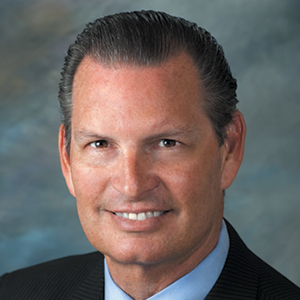Commercial mortgage brokers, as the intermediaries between commercial real estate investors and lenders, are expected to always stay on top of what’s new in their industry. The challenge, however, is that industries are always changing, often permanently.
The lending industry is no stranger to change. For centuries, lending was dominated by banks, life-insurance companies, credit unions, pension funds and other so-called “traditional” lenders. But over the past decade, two seismic shifts have forever changed how we think about borrowing and lending. That has allowed a new player to emerge in the industry — the alternative lender.
Change is groundbreaking for some industries. For instance, who in the music business could have predicted that a platform as seemingly innocuous as Napster would forever change the way people consume and experience music? Who in the news media could have predicted that a social networking site like Facebook would one day become a primary source of information for millions of people?
Whether it’s a young, innovative upstart that offers a better product at a better price, or an unforeseen macroeconomic event that disrupts entire business models, change is the one constant in the business world.
Tracing direct lending’s roots
There’s a simple reason that traditional lenders control so much lending activity: They sit in the middle of the flow of capital.
Imagine how people went about getting a loan in the days before banks. You could ask your family members or neighbors and try to scrounge up enough capital to meet your needs. You could ask a wealthy local businessman, who would likely ask something of you in return.
What if your family and friends didn’t have any money to spare, however? What if the businessman asked for something you couldn’t deliver? You might walk around the entire village asking everyone you know until someone said “yes.”
The problem with this early form of direct lending is a conflict of desire: A borrower who needs to borrow a certain amount of money for a certain period of time must find a lender willing to lend that amount of money for that period of time. This process, human beings realized fairly early on, is incredibly inefficient. So, they created a better way — the fractional-reserve banking system.
Instead of forcing everyone to find their own capital, early financiers created a system that could match the needs of savers and borrowers, absorbing any mismatches of time and amount. The bank played the role of middleman, aggregating the supply and demand of capital to make sure that businesses have access to funds and savers are able to earn a return on investment.
Technology opens doors
Thanks to the internet and the rise of alternative lenders — which include technology-enabled direct lenders, nonbank lenders and marketplace lenders — the process of matching savers and borrowers has become faster, easier and more transparent.
Instead of waiting weeks or even months for a bank to make a decision on a loan application, for example, borrowers using tech-enabled alternative lenders can often apply in just 10 minutes and receive a decision in as little as 24 to 48 hours. Many of these lenders also offer online deal trackers or managers, allowing mortgage brokers and borrowers to see the real-time status of their loan applications or payments. This resulted in an improved customer experience and, ultimately, more deal flow.
Today, practically every lender uses technology in some aspect of its business, whether to evaluate potential borrowers or track customer behavior. But increasingly, it’s the alternative and nonbank lenders who are setting the standard for what the lending experience should look like, and it’s why they are beginning to capture a significant percentage of the commercial real estate market.
Recession sparks retrenchment
Every good story needs a climax, and in the story of alternative lending, that moment is the global financial crisis. As markets crashed worldwide, traditional lenders tightened their balance sheets and all but eliminated their various forms of lending out of fear that the whole system was about to coming crashing down.
According to Federal Reserve data, commercial and industrial loans issued by all commercial banks peaked at almost $1.58 trillion in November 2008. Lending volumes plummeted over the next two years, however, dropping by one quarter to about $1.19 trillion in November 2010.
To make matters worse for banks, financial regulations such as the Dodd-Frank Act and Basel III imposed strict capital requirements on banks in an attempt to prevent another crisis. These requirements had the added effect of making it less profitable for banks to engage in lending, since they had to hold a certain percentage of assets on their balance sheets to cover liabilities. Naturally, banks responded by severely scaling back their lending activities and focusing only on the largest and most credit- worthy borrowers.
The rise of alternatives
So, how did smaller and less creditworthy borrowers obtain capital? The answer was alternative and nonbank lenders, which stepped in to help fill the void left by banks. As the economy recovered and interest rates remained low, alternative and nonbank lenders further solidified their positions.
Alternative small-business lenders had a 4.3 percent share of the U.S. small-business lending market in 2015, a share that is expected to rise to 20.7 percent by 2020, according to Business Insider. The Mortgage Bankers Association reported alternative lenders had a 68 percent year-over-year increase in commercial and multifamily loans in 2015. That was nearly double the 35 percent increase for commercial banks.
While banks still represent the majority of lending volumes, it’s clear that alternative lenders are increasingly becoming a go-to source of capital for small and medium-sized businesses, as well as individual consumers. The lenders that are best positioned to continue accumulating market share are likely to be the ones that can best combine the benefits of technology with a dedicated customer experience.
• • •
The next chapter in the story of commercial real estate lending is unclear, but alternative and nonbank lenders are likely to continue to play a major role. Recent lending volumes point to a future where both borrowers and mortgage brokers will have a wide range of options for their capital needs. Commercial mortgage brokers should take the time to learn about the different types of alternative lenders and educate their clients about why an alternative lender may make sense for them.
Author
-

Gary Bechtel serves as CEO of Michigan-based Red Oak Capital Holdings LLC, a group of capital entities that lends and invests on commercial real estate by raising funds through retail and institutional channels. He leads the company’s investment management leadership teams with direct oversight of all portfolios. Prior to joining Red Oak in 2020, Bechtel served as president of Money360. Over the past 34 years, he has been involved in all aspects of commercial real estate finance and has closed more than $10 billion in commercial debt transactions.





